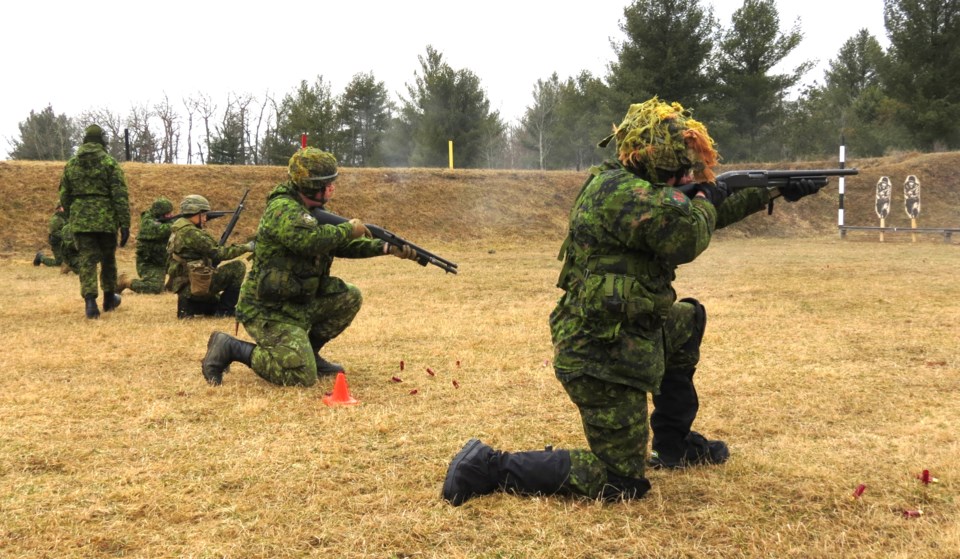Most members of the Canadian Armed Forces never fire a shotgun as part of their military training or duties. But Canadian Ranger instructors in the Far North of Ontario routinely carry 12-gauge shotguns when they need to.
“We often encounter polar bears on the coasts of Hudson Bay and James Bay,” said Master Warrant Officer Carl Wolfe, a company sergeant major. “Usually the bears are hungry or curious. But they are predators so you need protection if necessary. We also encounter black bears and large wolves. And there’s always the chance you may come across a rabid animal.”
The military usually uses shotguns for only specialized purposes, such as breaching locked doors or during naval boarding operations.
During the summer months, when polar bears cannot hunt for seals on ice, they wander inland in their search for food. They have been encountered inland as far as Webequie First Nation, which is 260 kilometres from Peawanuck in Polar Bear Provincial Park on Hudson Bay.
The instructors spend a lot of time on the land with Canadian Rangers and Junior Canadian Rangers. Rangers are part-time army reservists in 29 First Nations across the Far North of Ontario. Junior Rangers are members of an army youth program for boys and girls aged 12 to 18.
“The Rangers are used to bears,” Wolfe said. “They can tell when there’s going to be an issue. With black bears, they generally use a loud whistle, stand tall and look big and loud and the bears go away. A loud shot usually scares them off. But the odd time you’ll get a young, inquisitive bear that keeps approaching.”
Five years ago at a large annual training camp for Junior Rangers, warning shots failed to deter a persistent black bear that kept coming back to the camp at night. The bear kept approaching a Ranger on night bear patrol. He fired four shots with a shotgun, missed with the first two rounds, but killed the bear with two further shots.
On another occasion, a young black bear kept encroaching on a Ranger training camp on a remote island. Loud shouting and the banging of pots and pans failed to deter it. It was finally driven off after being hit with non-lethal bird shots.
“Depending on the situation instructors are in they have to be ready to use a shotgun,” said Master Warrant Officer Fergus O’Connor. “It’s very serious and something that they need to be skilled at because they need to be able to put that slug exactly where they want it to go. Typically instructors are trained in other methods of discouraging wildlife. We train to shoot as a last case scenario.”
The Rangers accompanying instructors are the primary method of predator control. But instructors must be able to take action when required.
The instructors of 3rd Canadian Ranger Patrol Group, which commands the 600 Rangers of Northern Ontario, recently completed their annual military recertification on shooting ranges at Canadian Forces Base Borden, near Barrie. They qualified, along with the headquarters staff, in the use of shotgun, pistol, the C7 assault rifle, and the Ranger C19 rifle.
Sgt Peter Moon is a Ranger with 3CRPG at CFB Borden.



